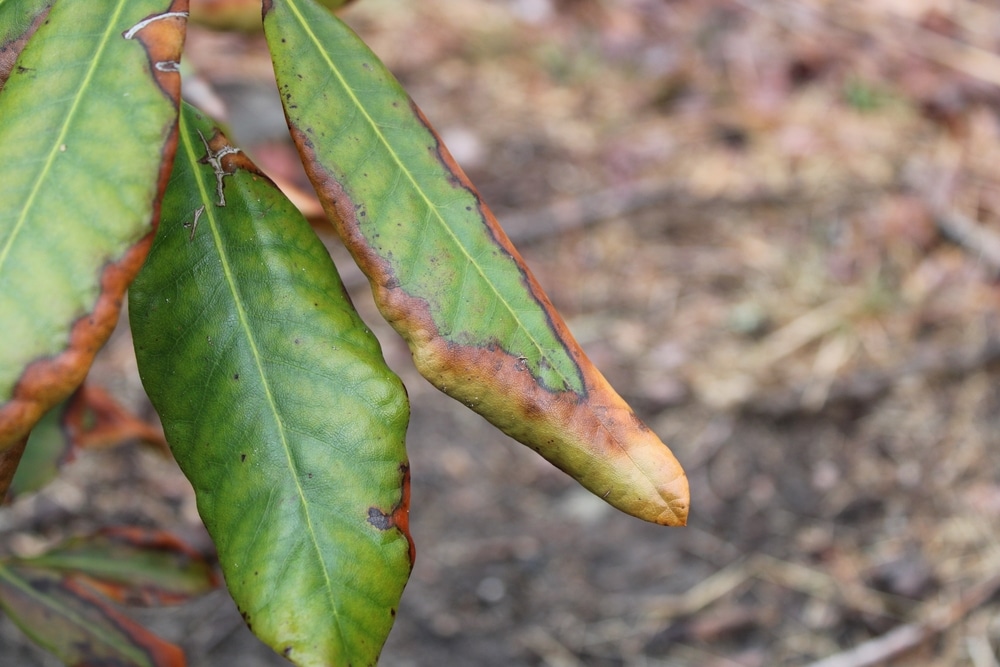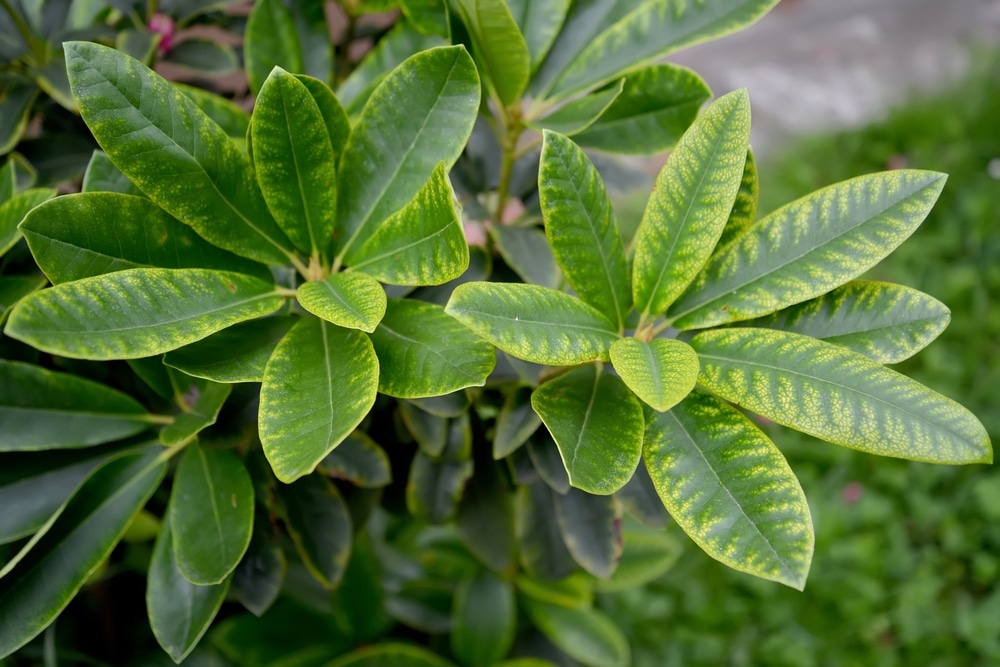If you’ve noticed that your rhododendron’s leaves are turning yellow, don’t panic!
This is a common problem for rhododendrons; you can do several things to fix it.
This article will discuss the causes of yellow leaves on rhododendrons and how to correct them. We will also provide some helpful tips on keeping your rhododendron healthy and looking its best.
What Does Yellow Leaves Mean?
The first step in solving the problem is understanding what yellow leaves mean.
There are several reasons why rhododendron leaves turn yellow; it is essential to identify the cause to correct the problem.
Here are some of the most common reasons for yellow leaves on rhododendrons:
Too Much Sunlight
One of the most common questions gardeners have is, “why do my rhododendron leaves turn yellow?” The answer is usually that the plant is getting too much sunlight.
Rhododendrons are native to woodlands, which grow beneath the dappled shade of taller trees. In full sun, the leaves of these Shade-loving shrubs quickly become scorched and turn yellow.
To prevent this, choosing a planting site that offers dappled sunlight or light shade for most of the day is essential. If your rhododendron is already growing in too much sun, you can try pruning back some branches to create more shade. You should also consider mulching around the base of the plant to help keep roots cool and moist.
Too Much Water
Rhododendrons need regular watering, but they don’t like to be constantly moist. If the leaves are yellow and wilted, it’s a sign that the plant is getting too much water.
Overwatering can cause root rot, which will eventually kill the plant. If you think your rhododendron is getting too much water, start by reducing the watering frequency. Let the soil dry out somewhat between watering and ensure the plant has good drainage. If the problem persists, you may need to replant the rhododendron in a drier location.
Nutrient Deficiency
When plants don’t get enough of certain minerals, they can start to show signs of stress. For example, a lack of nitrogen can cause the leaves to turn yellow. This is because nitrogen is essential for photosynthesis, plants’ process of creating food. Without enough nitrogen, the leaves can’t produce enough chlorophyll, which gives them their green color.
A deficiency in other minerals can cause similar problems. For instance, a lack of iron can cause the leaves to turn pale or yellow. If you suspect that your rhododendron has a nutrient deficiency, consider giving it a fertilizer containing all the necessary minerals.
Poor Soil Quality
One common cause of nutrient deficiencies in rhododendrons is poor soil quality. If the soil is too sandy or clay-like, it can be difficult for the roots to uptake nutrients. Additionally, if the soil pH is not properly balanced, it can lead to nutrient deficiencies.
To fix this problem, consider amending the soil with organic matter such as compost or peat moss. This will help improve the soil quality and make it easier for the roots to access nutrients.
Pest or Disease
Sometimes, yellow leaves are the result of infestations or illnesses. Aphids are tiny insects that feed on plant sap. This can cause the leaves to become yellow and ultimately fall off. Powdery mildew is a fungal disease that can cause leaves to turn yellow.
If you believe your rhododendron has an insect or fungus problem, you should treat it with an appropriate pesticide or fungicide. Always follow the instructions on the label and take care to avoid harming beneficial insects such as bees.
How to Prevent Yellow Leaves
Gardeners familiar with rhododendrons know they are prized for their glossy green leaves and beautiful flowers. However, these plants can sometimes develop yellow leaves, which can be unsightly and may eventually lead to leaf drops.
Iron Deficiency
Rhododendrons are beautiful but finicky plants. They thrive in acidic soil and need just the proper nutrients to stay healthy.
One common problem that rhododendrons face is iron deficiency, which can cause the leaves to turn yellow or pale green. If left untreated, iron deficiency can eventually kill the plant.
The good news is that iron deficiencies can be cured by adding a seaweed and iron mixture to the soil. Seaweed has a natural acidity that encourages plant growth; the iron added to these products aids in the delivery of nutrients to Rhododendrons in an optimum way.
Slow Release Fertilizers
If you find that your rhododendron has yellow leaves, one of the best things you can do is fertilize it with a slow-release fertilizer. This will help to green up the leaves and encourage new growth. Be sure to follow the directions on the fertilizer package, as too much fertilizer can cause more problems.
Pruning
Sometimes, yellow leaves are simply the result of too much growth. If your rhododendron is getting leggy or the leaves are growing smaller, it’s time to give it a good pruning. This will encourage new growth and help keep the plant looking its best.
When pruning, be sure to remove any dead or dying leaves. This will help prevent the spread of disease and improve the plant’s overall appearance.
Rhododendron Yellow Leaves: Conclusion
In conclusion, rhododendron yellow leaves can mean a few different things. Sometimes, it is simply a sign that the plant is stressed and needs some extra TLC.
Other times, it could be a nutrient deficiency or pest issue. By paying close attention to your plant, you should be able to determine what is causing the problem and take the necessary steps to fix it. With a bit of care, your rhododendron will return to its beautiful self in no time!

